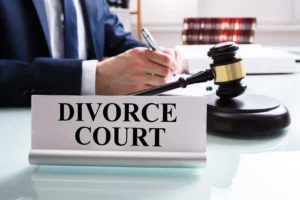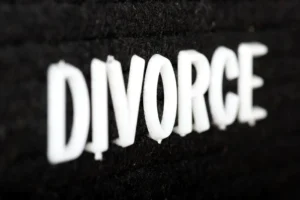How Do Pre-Existing Conditions Affect Personal Injury Compensation?
When pursuing a personal injury claim, the presence of pre-existing conditions can significantly impact the compensation you receive. Insurance companies and defense attorneys often scrutinize these prior health issues in an attempt to minimize liability and reduce settlement amounts. Understanding how pre-existing conditions affect your claim is essential for securing fair compensation that accurately reflects the harm caused by another party’s negligence. The legal principles governing these situations, particularly the “eggshell plaintiff” rule, provide important protections for injured parties with prior medical conditions.
Pre-existing conditions encompass any health issues that existed before the accident or incident that led to your current injury claim. These can range from chronic illnesses like diabetes or arthritis to previous injuries such as healed fractures or prior back problems. According to the CDC, approximately 51.8% of adults have at least one chronic health condition, making this issue relevant to a majority of potential personal injury claimants. The presence of such conditions does not disqualify you from receiving compensation, but it does introduce additional complexities that must be carefully addressed to ensure a fair outcome.
Understanding Pre-Existing Conditions in Legal Context
In the realm of personal injury law, a pre-existing condition refers to any medical issue that existed prior to the accident or incident that forms the basis of your claim. These conditions can include chronic illnesses, degenerative conditions, previous injuries, or any other health problems documented in your medical history. The legal significance of pre-existing conditions stems from the fundamental principle that defendants are liable only for the harm they actually cause, not for conditions that would have existed regardless of their actions.
Courts and insurance companies distinguish between injuries directly caused by the accident and the aggravation or exacerbation of pre-existing conditions. While a defendant is not responsible for the pre-existing condition itself, they are legally liable for any worsening or aggravation of that condition resulting from their negligence. This distinction becomes crucial when calculating damages and determining appropriate compensation, as it requires separating the effects of the accident from the baseline condition that existed beforehand.
The burden of proving that an accident aggravated a pre-existing condition typically falls on the injured party. This requires establishing both the existence and extent of the pre-existing condition prior to the accident and demonstrating how the accident specifically worsened that condition. Medical records, expert testimony, and detailed documentation of symptoms before and after the accident become essential elements in meeting this burden of proof and securing fair compensation for the actual harm caused.
The Eggshell Plaintiff Rule: A Critical Legal Protection
The eggshell plaintiff rule represents one of the most important legal protections for injury victims with pre-existing conditions. This long-established doctrine states that defendants must “take their victims as they find them,” meaning they are responsible for all harm caused by their negligence, even if the victim was unusually susceptible to injury due to a pre-existing condition. Under this rule, a defendant cannot escape liability merely because the plaintiff was more vulnerable to harm than the average person.
This rule derives its name from the hypothetical scenario of a plaintiff with an unusually fragile skull (like an eggshell) who suffers a severe head injury from an impact that would cause only minor harm to most people. Despite the plaintiff’s unusual susceptibility, the defendant remains fully liable for the resulting injuries. The principle applies equally to less dramatic scenarios, such as when someone with a degenerative disc disease suffers more severe consequences from a car accident than would a person with a healthy spine.
The eggshell plaintiff rule reflects a fundamental fairness in the legal system by ensuring that more vulnerable individuals are not denied compensation simply because of their pre-existing health status. Without this protection, those with prior health conditions would face systematic disadvantages in personal injury claims, effectively creating a system where the most vulnerable receive the least protection. Instead, the rule places the risk of encountering an unusually vulnerable victim on the negligent party rather than on the injured person.
How Insurance Companies Use Pre-Existing Conditions to Minimize Claims
Insurance adjusters employ several tactics to use pre-existing conditions as grounds for reducing or denying injury compensation. One common approach is “over-generalization,” where adjusters identify a mention of a pre-existing condition in medical records and then attribute all similar post-accident complaints entirely to that condition. This tactic ignores the possibility that the accident significantly worsened the condition or created new complications related to it.
Another frequent strategy is what might be called “playing doctor,” where insurance representatives without medical qualifications offer opinions about the cause of symptoms and the relationship between pre-existing conditions and current complaints. Adjusters may comb through years of medical records looking for any mention of similar symptoms, even if they were minor or temporary, to argue that current problems are merely continuations of long-standing issues rather than results of the recent accident.
Insurance companies also exploit gaps in medical treatment or inconsistencies in reporting symptoms to suggest that injuries are not as severe as claimed or are unrelated to the accident. They may argue that delays in seeking treatment indicate that injuries were not caused by the accident or that failure to mention certain symptoms to healthcare providers proves those symptoms are fabricated or exaggerated. These tactics underscore the importance of thorough documentation and consistent medical care following an accident, particularly for those with pre-existing conditions.
Proving Aggravation of Pre-Existing Conditions
Successfully demonstrating that an accident aggravated a pre-existing condition requires a strategic approach to evidence gathering and presentation. Medical documentation plays a central role in this process, with records clearly showing the state of the condition before the accident and the changes that occurred afterward. This comparative analysis helps establish the causal link between the accident and the worsening of symptoms or limitations.
Expert medical testimony provides crucial support for claims involving pre-existing conditions. Healthcare providers who can articulate how the accident specifically impacted the pre-existing condition, distinguishing between natural progression and accident-related aggravation, significantly strengthen the claim. These experts should have specialized knowledge relevant to the specific condition and be able to explain complex medical concepts in terms understandable to judges, jurors, and insurance adjusters.
Diagnostic evidence such as imaging studies (X-rays, MRIs, CT scans) taken before and after the accident can provide objective proof of changes to the physical condition. Similarly, treatment records showing differences in the frequency, intensity, or type of interventions needed before and after the accident help quantify the impact. Pain journals, functional assessments, and testimony from friends or family regarding observable changes in abilities or limitations can further support claims of aggravation.
Common Challenges in Pre-Existing Condition Cases
One of the most significant challenges in cases involving pre-existing conditions is establishing clear causation between the accident and the worsening of symptoms. The natural progression of many conditions can blur the line between what would have happened anyway and what resulted from the accident. This is particularly true for degenerative conditions like arthritis or disc disease, which typically worsen over time regardless of external factors.
Incomplete or inconsistent medical records present another substantial hurdle. If an individual has not sought regular treatment for their pre-existing condition, there may be limited documentation of their baseline status prior to the accident. Similarly, if they have seen multiple providers or changed healthcare systems, obtaining a complete medical history can prove difficult. These gaps in documentation can be exploited by defense attorneys to challenge claims about the impact of the accident.
The subjective nature of many symptoms, particularly pain and mental health effects, creates additional complications. Without objective measures, proving that pain or psychological distress increased specifically because of the accident rather than other life factors becomes challenging. This subjectivity often leads to credibility contests, where the injured party’s reliability and honesty come under scrutiny, adding emotional stress to the already difficult claims process.
The Importance of Medical Documentation
Medical records serve as the foundation of any personal injury claim involving pre-existing conditions. These documents provide objective evidence of the nature and extent of prior health issues, the impact of the accident, and the resulting treatment needs. Comprehensive records from before the accident establish a baseline against which post-accident changes can be measured, while detailed documentation after the incident tracks the progression of symptoms and treatment responses.
The timing and consistency of medical care significantly influence the credibility of claims involving pre-existing conditions. Seeking prompt medical attention after an accident and following treatment recommendations diligently demonstrates the seriousness of injuries and helps establish the causal connection to the accident. Conversely, delays in treatment or gaps in care can be interpreted as evidence that injuries were minor or unrelated to the accident, potentially undermining the claim.
When discussing pre-existing conditions with healthcare providers, clarity and honesty are essential. Patients should fully disclose their medical history while clearly communicating any changes or new symptoms following the accident. Medical records should reflect these distinctions, ideally with providers specifically noting their assessment of how the accident affected pre-existing conditions. Such explicit documentation from treating physicians carries substantial weight in personal injury claims and can significantly strengthen the case for fair compensation.
Legal Strategies for Maximizing Compensation
Retaining an experienced personal injury attorney familiar with pre-existing condition cases represents perhaps the most important step in securing fair compensation. These specialists understand how to anticipate and counter insurance company tactics, properly document the aggravation of existing conditions, and present compelling evidence that distinguishes accident-related injuries from baseline health issues. Their expertise becomes particularly valuable when navigating the complex medical and legal issues that arise in these cases.
Developing a comprehensive medical narrative that clearly delineates the pre-accident condition from post-accident changes forms a crucial part of the legal strategy. This narrative should incorporate all relevant medical opinions, diagnostic findings, and treatment records to create a coherent picture of how the accident specifically impacted the pre-existing condition. The goal is to demonstrate not just that the condition worsened after the accident, but that this worsening resulted directly from the accident rather than natural progression.
Addressing pre-existing conditions proactively rather than reactively strengthens the claim significantly. This means disclosing relevant medical history early in the process while simultaneously gathering evidence that shows how the accident changed the trajectory of the condition. By acknowledging the pre-existing condition but clearly establishing the additional harm caused by the accident, claimants can undercut insurance company attempts to attribute all current problems to prior health issues.
Types of Damages Available in Pre-Existing Condition Cases
Compensatory damages in personal injury cases involving pre-existing conditions focus specifically on the additional harm caused by the accident. These may include medical expenses for treatment of the aggravated condition, beyond what would have been necessary without the accident. The calculation typically involves comparing projected treatment needs before the accident with actual treatment needs afterward, with the difference representing the compensable amount.
Lost wages and diminished earning capacity claims become more complex with pre-existing conditions. If the condition already limited work capacity before the accident, compensation covers only the additional limitations resulting from the accident. This requires establishing both pre-accident work capabilities and post-accident restrictions, often with the help of vocational experts who can quantify the economic impact of these changes.
Pain and suffering damages present particular challenges in pre-existing condition cases. The subjective nature of pain makes it difficult to distinguish between pre-existing discomfort and additional suffering caused by the accident. Courts typically consider factors such as changes in pain medication requirements, new limitations on activities, and healthcare provider assessments of pain level changes when determining appropriate non-economic damages for the aggravation of pre-existing conditions.
The Role of Medical Experts in Pre-Existing Condition Claims
Medical experts play a pivotal role in establishing the causal relationship between an accident and the aggravation of pre-existing conditions. These experts review medical records, examine the injured party, and provide professional opinions about whether and how the accident affected the underlying condition. Their testimony helps distinguish between symptoms attributable to the natural progression of the condition and those resulting from the accident.
Different types of medical experts may contribute to pre-existing condition cases. Treating physicians who have firsthand knowledge of the patient’s condition before and after the accident can provide particularly credible testimony about observed changes. Independent medical examiners, while often perceived as less favorable to claimants, may offer opinions that carry weight with insurance companies and courts due to their presumed objectivity. Specialists with expertise in the specific condition at issue can provide authoritative explanations of how trauma affects the underlying pathology.
The most effective expert testimony goes beyond simply stating conclusions about causation to explaining the medical reasoning behind those conclusions. Experts who can clearly articulate the mechanisms by which the accident aggravated the pre-existing condition, supported by reference to medical literature and specific findings in the individual case, provide the most compelling evidence. This detailed explanation helps judges and jurors understand complex medical concepts and appreciate the connection between the accident and the resulting harm.
Case Examples: How Courts Handle Pre-Existing Conditions
Courts consistently apply the eggshell plaintiff rule to protect vulnerable individuals with pre-existing conditions, though the specific application varies based on case details. In cases where the pre-existing condition was asymptomatic before the accident but became symptomatic afterward, courts typically hold defendants fully liable for the resulting symptoms. The reasoning follows that while the underlying condition existed, it was the defendant’s negligence that triggered active symptoms and associated damages.
For conditions that were already symptomatic, courts focus on the degree of aggravation. If medical evidence shows that symptoms significantly worsened following the accident, beyond what would be expected from natural progression, courts generally award damages proportional to this worsening. The burden remains on the plaintiff to demonstrate both the pre-accident baseline and the post-accident changes through medical records and expert testimony.
Courts also consider the impact of pre-existing conditions on recovery trajectories. When evidence shows that a pre-existing condition has prolonged recovery time or necessitated more extensive treatment than would be typical for the injury, defendants generally remain liable for these additional needs under the eggshell plaintiff rule. This principle acknowledges that while the condition may have made the plaintiff more vulnerable, it was still the defendant’s actions that necessitated treatment in the first place.
Special Considerations for Different Types of Pre-Existing Conditions
Degenerative conditions such as arthritis, disc disease, and osteoporosis present unique challenges in personal injury claims. These conditions naturally worsen over time, making it difficult to distinguish between normal progression and accident-related aggravation. Medical experts typically assess whether the accident accelerated the degenerative process or caused it to manifest in ways that would not have occurred in the normal disease course. Imaging studies showing structural changes after the accident can provide particularly compelling evidence in these cases.
Previous injuries to the same body part as affected in the current accident require careful analysis to establish the degree of recovery before the new incident. Medical records documenting the resolution or stability of symptoms from the prior injury help establish that new or increased symptoms resulted from the recent accident rather than representing ongoing issues from the original injury. Treatment gaps between injuries can either support this distinction or create challenges, depending on whether they suggest recovery or inconsistent care.
Mental health conditions present some of the most complex scenarios in pre-existing condition cases. Psychological injuries like anxiety, depression, or PTSD may be exacerbated by physical trauma or the stress of an accident. Establishing the baseline mental health status before the accident and documenting changes afterward typically requires expert psychological evaluation and consistent mental health treatment records. The subjective nature of these conditions makes expert testimony particularly important in establishing causation and quantifying the impact.
Practical Advice for Claimants with Pre-Existing Conditions
Individuals with pre-existing conditions should seek immediate medical attention following an accident, even if symptoms initially seem similar to their baseline condition. Prompt medical evaluation creates a record connecting the accident to any changes in symptoms and helps establish the timeline for aggravation of the condition. During these evaluations, patients should fully disclose their pre-existing conditions while clearly communicating any new or worsened symptoms they attribute to the accident.
Maintaining consistent medical care throughout the claims process serves both health and legal interests. Following treatment recommendations, attending all scheduled appointments, and reporting symptom changes accurately helps create a comprehensive medical record that supports the claim. This consistency also demonstrates the seriousness of the injuries and counters defense arguments that gaps in treatment indicate minor or resolved problems.
Documenting functional changes through daily journals, photographs, or videos can provide powerful supporting evidence. Recording limitations on activities that were possible before the accident but became difficult afterward helps illustrate the real-world impact of the aggravated condition. Similarly, tracking medication changes, particularly increased dosages or new prescriptions following the accident, provides objective evidence of worsening symptoms that can strengthen the claim for compensation.
Insurance Company Tactics and How to Counter Them
Insurance adjusters commonly attempt to attribute all current symptoms to the pre-existing condition rather than the accident, effectively denying liability for any compensation. Countering this tactic requires clearly establishing the stable nature of the condition before the accident and documenting specific changes that occurred afterward. Medical opinions explicitly addressing causation, particularly those that quantify the percentage of current symptoms attributable to the accident versus the pre-existing condition, can effectively rebut these blanket denials.
Another common tactic involves insurance companies requesting extensive medical records going back many years or even decades, hoping to find any mention of similar symptoms that could be used to minimize the current claim. While insurers have legitimate rights to relevant medical information, overly broad requests may constitute fishing expeditions designed to find unrelated issues. Working with an attorney to appropriately limit record requests to relevant timeframes and conditions helps protect privacy while still providing necessary documentation.
Insurance companies may also attempt to use surveillance or social media monitoring to contradict claims about functional limitations resulting from the aggravated condition. Maintaining consistency between reported limitations and actual activities represents the best defense against such tactics. Claimants should be aware that seemingly innocent activities captured out of context can be misrepresented as evidence that injuries are less severe than claimed, underscoring the importance of following medical advice about activity restrictions.
The Impact of Pre-Existing Conditions on Settlement Negotiations
Pre-existing conditions inevitably complicate settlement negotiations, often leading to initial offers that significantly undervalue the claim. Insurance adjusters typically begin with the position that most or all current symptoms relate to the pre-existing condition rather than the accident, justifying minimal compensation. Effective negotiation requires systematically countering this position with medical evidence that clearly delineates accident-related aggravation from the baseline condition.
The strength and clarity of medical evidence directly influences settlement amounts in pre-existing condition cases. Claims supported by detailed physician statements explicitly addressing causation, comparative diagnostic studies showing changes after the accident, and consistent treatment records documenting symptom progression typically result in higher settlements than those relying on more general or ambiguous medical documentation. Investing in thorough medical documentation and expert opinions often yields substantial returns in final settlement amounts.
Timing considerations also affect settlement strategies in pre-existing condition cases. These claims typically require more extensive medical documentation and expert input than straightforward injury cases, potentially extending the timeline before maximum medical improvement is reached. While this longer timeframe can delay resolution, rushing to settle before the full impact of the aggravated condition is documented typically results in inadequate compensation that fails to cover long-term needs.
Long-Term Implications and Future Medical Needs
Accidents that aggravate pre-existing conditions often create long-term complications that extend beyond the immediate recovery period. These may include accelerated degeneration, increased vulnerability to future injuries, or permanent worsening of the underlying condition. Comprehensive injury claims should account for these long-term implications, including projected future medical expenses, ongoing pain management needs, and anticipated functional limitations.
Medical experts play a crucial role in establishing future needs related to the aggravated condition. Their projections should distinguish between treatment that would have been necessary due to the natural progression of the pre-existing condition and additional care necessitated by the accident-related aggravation. This distinction helps ensure that compensation covers only those future expenses fairly attributable to the defendant’s negligence rather than pre-existing health issues.
The possibility of future complications creates particular challenges in settling claims involving pre-existing conditions. Once a settlement is accepted, additional claims for the same injury are typically barred, even if conditions worsen unexpectedly. This finality underscores the importance of comprehensive medical evaluation and conservative prognosis before settlement. In cases with significant uncertainty about future developments, structured settlements that provide ongoing payments rather than lump sums may better accommodate evolving medical needs.
Conclusion: Protecting Your Rights with Pre-Existing Conditions
Having a pre-existing condition does not disqualify you from receiving fair compensation for injuries caused or aggravated by someone else’s negligence. The eggshell plaintiff rule provides important legal protection, ensuring that defendants remain responsible for the harm they cause, even when the victim was more vulnerable due to prior health issues. However, these cases do require more careful documentation, expert support, and strategic legal representation to overcome the challenges presented by insurance company tactics.
The key to success in pre-existing condition cases lies in clearly establishing the distinction between your baseline health status before the accident and the changes that occurred afterward. This requires prompt medical attention, consistent treatment, thorough documentation, and expert opinions that specifically address causation. By focusing on the aggravation or exacerbation caused by the accident rather than the pre-existing condition itself, you can build a compelling case for appropriate compensation.
Working with an experienced personal injury attorney who understands the complexities of pre-existing condition claims provides the best protection for your legal rights. These specialists can anticipate and counter insurance company tactics, properly document the impact of the accident on your condition, and present your case in the most favorable light. With proper legal guidance and medical support, you can overcome the challenges presented by pre-existing conditions and secure the compensation you deserve for the actual harm caused by another’s negligence.
Websites Used for This Article
- https://lacenturylaw.com/personal-injury-claim-with-a-pre-existing-condition/
- https://www.kylejarzmiklaw.com/blog/how-do-pre-existing-medical-conditions-affect-a-personal-injury-claim/
- https://www.romanowlawgroup.com/articles/impact-of-pre-existing-conditions-on-car-accident-injury-claims/
- https://www.tampainjuryaccidentlaw.com/what-is-the-eggshell-plaintiff-rule/
- https://www.brclegal.com/explaining-the-eggshell-plaintiff-rule/
- https://www.1800thelaw2.com/resources/personal-injury/med-records/
- https://wfirm.com/leveraging-medical-records-for-personal-injury-case-success/
- https://chaileallenlaw.com/strategies-proving-accident-aggravated-pre-existing-condition/
- https://www.kantorlaw.net/impact-pre-existing-conditions-long-term-disability-claims/
- https://www.kraftlaw.com/legal-articles/common-defenses-used-by-insurance-companies-in-personal-injury-cases/
- https://dominguezfirm.com/injury-lawyer/the-impact-of-pre-existing-conditions-on-personal-injury-claims/
- https://hartleylawtx.com/blog/aggravation-of-a-pre-existing-condition-settlement/
- https://www.redstone.law/resources/adjusters/pre-existing-conditions
- https://www.banalaw.com/practices/personal-injury/the-impact-of-pre-existing-conditions-on-personal-injury-claims/
- https://www.robertecravenlaw.com/understanding-and-defeating-claims-and-defenses-of-pre-existing-injuries/
- https://midwestinjurylawyers.com/blog/personal-injury-claim-with-pre-existing-condition/
- https://1800lionlaw.com/pre-existing-conditions-affect-your-personal-injury-claim/
- https://www.injurylawyers.com/blog/aggravation-of-pre-existing-condition-settlement/
- https://www.thefafirm.com/blog/how-pre-existing-conditions-impact-personal-injury-claims/
- https://www.morrisbart.com/faqs/do-pre-existing-conditions-affect-personal-injury-claim/
- https://ohiotiger.com/pre-existing-condition-affect-my-pi-claim/
- https://siegfriedandjensen.com/faqs/how-pre-existing-conditions-affect-your-accident-claim/
- https://www.advocatemagazine.com/article/2016-march/the-eggshell-plaintiff
- https://www.bermansimmons.com/law-articles/representing-eggshell-plaintiffs-and-others-preexisting-conditions-or-injuries-post/
- https://plaintiffmagazine.com/recent-issues/item/the-eggshell-plaintiff
- https://www.runsensible.com/blog/eggshell-plaintiff-rule-personal-injury/
- https://www.law.cornell.edu/wex/eggshell_skull_rule
- https://ulg.law/the-eggshell-skull-rule-victims-with-pre-existing-conditions/
- https://www.hassonlawoffices.com/what-is-the-eggshell-skull-rule/
- https://www.jacobyandmeyers.com/blog/eggshell-plaintiff-pre-existing-injury-claim/
- https://en.wikipedia.org/wiki/Eggshell_skull
- https://www.callahan-law.com/what-eggshell-plaintiff-rule/
- https://swansonodell.com/understanding-cas-eggshell-plaintiff-rule/
- https://www.findlaw.com/legalblogs/law-and-life/the-eggshell-plaintiff-rule/
- https://www.trainorlawfirm.com/importance-of-keeping-accurate-records-in-a-personal-injury-case/
- https://pullanolaw.com/the-importance-of-medical-evidence-in-a-personal-injury-case/
- https://www.uslegalsupport.com/blog/medical-records-in-court-proceedings/
- https://www.sumnerlawgroup.com/blog/importance-of-medical-documentation-for-injury-claims/
- https://www.pilawyers.com/blog/proving-the-worsening-of-an-injury/
- https://www.callahan-law.com/importance-medical-documentation-personal-injury-cases/
- https://www.linkedin.com/pulse/how-do-you-prove-aggravation-pre-existing-condition-mfwyc
- https://www.gbw.law/blog/2024/september/the-role-of-medical-records-in-your-personal-inj/
- https://www.accidenttampa.com/medical-documentation-importance-personal-injury/
- https://www.scura.com/blog/establishing-causation-in-an-accident-that-aggravated-your-pre-existing-injuries
- https://www.brunerfirm.com/blog/can-insurance-companies-deny-claims-for-pre-existing-conditions/
- https://www.vaccineinjurypros.com/blog/how-do-pre-existing-conditions-affect-my-claim/
- https://www.nationalaffairs.com/publications/detail/how-to-cover-pre-existing-conditions
- https://www.warhawklegal.com/blog/2024/11/how-pre-existing-conditions-affect-a-personal-injury-claim/
- https://www.actuary.org/content/risk-pooling-how-health-insurance-individual-market-works-0
- https://www.schwebel.com/press/successfully-settling-a-preexisting-injury-case/
- https://www.gibsonhillpc.com/blog/can-insurance-companies-deny-claims-for-pre-existing-conditions/
- https://www.verywellhealth.com/pre-existing-conditions-exclusions-1738633
- https://dilaurilaw.com/effective-insurance-defense-strategy-digging-up-preexisting-conditions-to-minimize-plaintiffs-claim-for-damages/
- https://www.gattilaw.com/2020/09/how-insurance-companies-look-at-pre-existing-conditions/
- https://www.omahanelawyer.com/blog/how-do-preexisting-medical-conditions-affect-a-personal-injury-claim/
- https://www.virginiasinjurylawyers.com/faqs/can-a-pre-existing-condition-affect-my-personal-injury-claim/
- https://wemakeitright.com/eggshell-plaintiff-rule/
- https://www.forpeopleforjustice.com/the-eggshell-plaintiff-rule-and-what-it-means-for-your-injury-case/
- https://www.salterhealy.com/what-is-the-eggshell-skull-rule/
- https://alphaaccidentlawyers.com/blog/what-is-the-eggshell-plaintiff-rule/
- https://injury.arnoldsmithlaw.com/eggshell-plaintiff-rule.html
- https://www.foxandfarleylaw.com/what-is-the-eggshell-plaintiff-doctrine/
- https://www.drakelawgroup.com/post/the-role-of-medical-records-in-personal-injury-cases
- https://www.tapinjury.com/news/the-importance-of-medical-records-how-crucial-medical-records-are-to-building-a-solid-personal-injury-claim/
- https://lawshelf.com/videocoursesmoduleview/aggravation-and-pre-existing-conditions-module-6-of-6
- https://www.mendezsanchezlaw.com/post/medical-documentation-in-personal-injury-claims
- https://www.kff.org/affordable-care-act/issue-brief/pre-existing-conditions-and-medical-underwriting-in-the-individual-insurance-market-prior-to-the-aca/
- https://www.investopedia.com/terms/p/preexisting-condition-exclusion-period.asp
- https://www.cms.gov/cciio/resources/forms-reports-and-other-resources/preexisting













